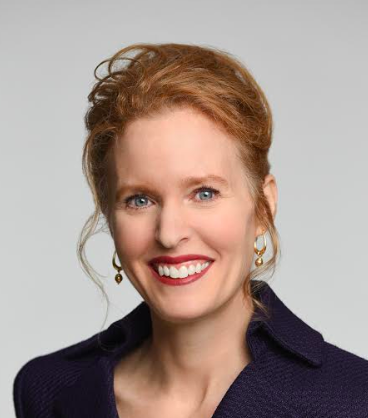
Miami, FL
In Miami, home of the Miami Heat, buses soon will be plastered with images of sweating pregnant women imploring people to seek shade, drink water and rest. It’s part of a vanguard campaign by Miami-Dade County Mayor Daniella Levine Cava and Chief Heat Officer Jane Gilbert and their Climate and Heat Health Task Force to save lives – lots of lives – as extreme heat impacts escalate due to climate change.
I’ve written before about extreme heat’s impact on health. And we know definitively now, based on COVID-19’s deadly toll, that real social determinants erupt from these impacts. Climate change shocks, like COVID-19 impacts, aren’t fair. Heat disproportionately impacts Black and Hispanic workers and could claim nearly 60,000 lives a year by 2050.
Which is why it’s particularly important that anyone with a stake in our cities uses that involvement to support extreme heat mitigation. As with many climate resilience interventions, local governments lead. And, fortunately, many of their tactics can be adopted easily by the corporate sector.
Change outdoor work hours to allow for working when the sun isn’t blazing. A local Phoenix ordinance allows for construction to begin at 5a.m., and Home Depot obliges by opening then, too. Also in the West, the growing trend is to harvest crops at night to escape the worst of the agricultural sector’s heat.
Consider impacts for indoor workers in workplaces without air cooling options. Many job sites are blistering. Make frequent breaks compulsory. Require cooling centers. Ensure that a hierarchy doesn’t prohibit any of your employees from benefiting from such cooling actions. Also, reward foremen and teams that comply, change key performance indicators to include breaks per hour and discard performance measures that drive overwork in too-hot conditions. (And, while we’re at it, change cultural norms to waive dark suits for office workers in hot workplaces.)
Make drinking water accessible. At outdoor entertainment venues – including summer festivals where bottled water prices rival beer prices – make water free and easily available. Some municipalities are considering this requirement for events on public property.
Invest in cool community spaces that community residents actually will use. ClimateResolve, which in Los Angeles builds collaborations to champion equitable climate solutions, is working to create privately funded resilience-hubs – community-serving facilities that includes use as public cooling centers when it gets hot there.
Install publicly accessible spray pools and water fountains; and in addition, build integrated shade and cool pavements, walls and roofs (think white reflectivity); install as much vegetated space outdoors as possible; and orient buildings to maximize shade.
Plant trees. Keep in mind that trees need water, so make it your business to care for trees in and near your property. It can take years for a tree to provide the shade and air cooling that the evapotranspiration we learned about in school confers. Check out the Tree Equity Score developed by American Forests to determine where your investment can pay significant dividends. Begin now with investments that confer multiple benefits to our communities for a generation.
While major coastal storms often catch the headlines, extreme heat is the leading weather-related killer. Increasingly, academics are pouring through death records of people who died during extreme heat times to identify heat-related deaths. Often, such deaths are a co-morbidity with heart attacks, asthma or chronic obstructive pulmonary disease (COPD). Are these casualties in your community? What can you do to contribute to preventing future deaths – beyond the tips above?
Build partnerships with health care providers, emergency responders, faith communities, workers’ rights organizations, different units of government, corporations and small business to share the responsibility of caring for everyone when it’s scorching outside and to raise awareness about the danger of extreme heat and how to address it.
And, of course, meet and exceed your ambitious net zero greenhouse gas emission targets. Because while heat will continue to rise due to the current greenhouse gases emitted into the atmosphere, the prospects for unlivable conditions (did you read about the astonishing heat in India and Pakistan?) are incredibly dire if all countries continue on today’s path of global emissions.
At the recent Forum on Global Resilience convened by the Adrienne Arsht-Rockefeller Foundation Resilience Center, Mayor Cava launched Miami-Dade County’s (and the nation’s ) first Heat Season. She and Kathy Baughman McLeod, director of the Center, are on a mission to name heat events like we identify hurricanes.
In the face of rising city temperatures, more Americans are inspired to ensure that those most at risk in hot weather, the poor and minorities, survive and thrive. And many more must be so motivated. Simply consider this: Vivid Economics, a strategic economics consultancy, estimates that heat-related losses of labor productivity will cost the U.S. economy half a trillion dollars annually by 2050.
Let’s agree: We are not playin’ with heat. All of us have a role – indeed, a stake – in creating ways to stay cool even as global temperatures rise.
Image credit: Daniel Alvarado via Pexels

Joyce Coffee, LEED AP, is founder and President of Climate Resilience Consulting. She is an accomplished organizational strategist and visionary leader with over 25 years of domestic and international experience in the corporate, government and non-profit sectors implementing resilience and sustainability strategies, management systems, performance measurement, partnerships, benchmarking and reporting.














